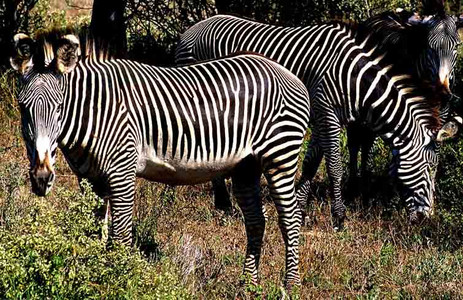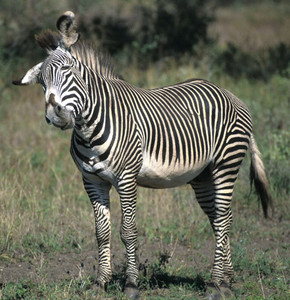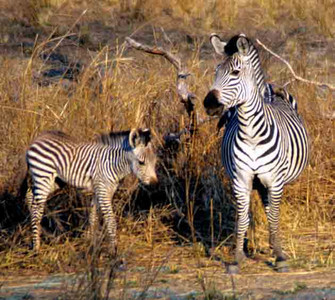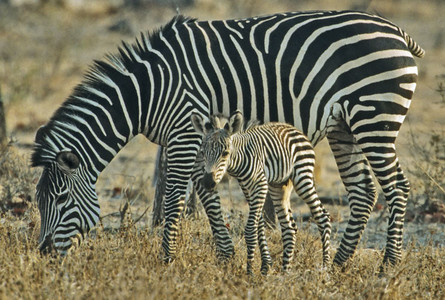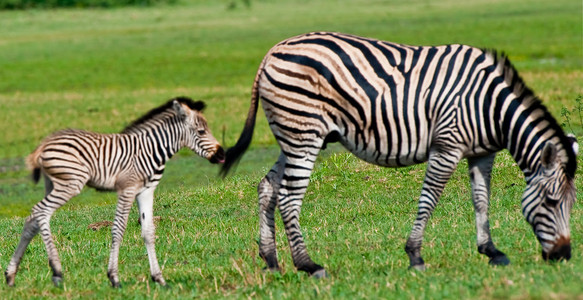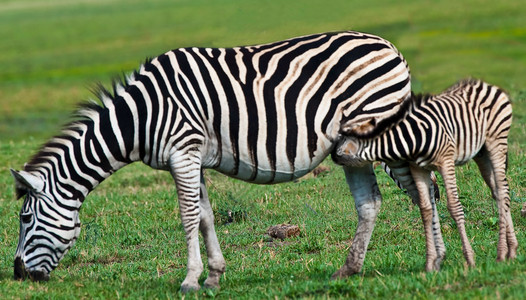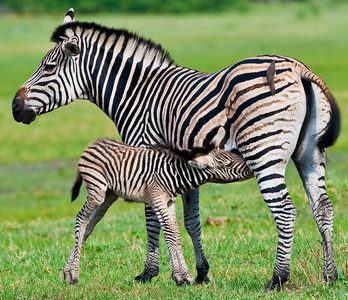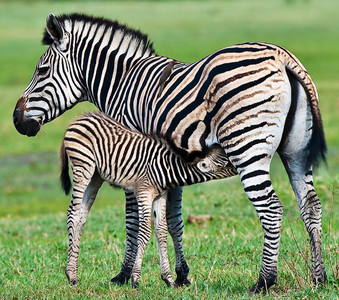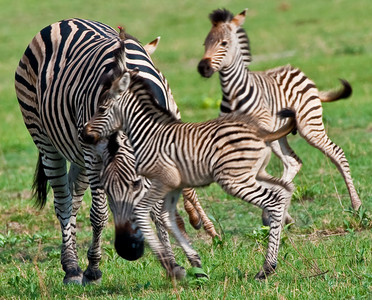
Grevy's Zebra
A small herd of Grevy's Zebra showing the obvious differences from the Burchell's species. Note the narrow, close stripes which don't quite reach the white belly, the long ears with white tips, and a heavier body. The Grevy's is much less common than the Burchell's zebra and is primarily found in northern Kenya (Sambura vicinity). [Lewa Downs, Kenya].
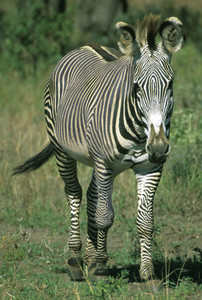
Grevy's Zebra
A frontal view close-up of a sub-adult Grevy's Zebra showing the interesting facial pattern. [Masai Mara, Kenya].
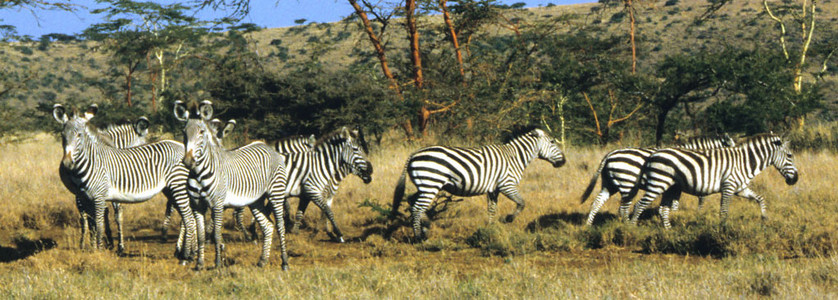
Grevy and Burchell's Zebra
Grevy & Burchell's Zebra: A mixed herd of Zebra: Grevy's (L, front), Burchell's Zebra (Rear & Right). [Samburu, Kenya].
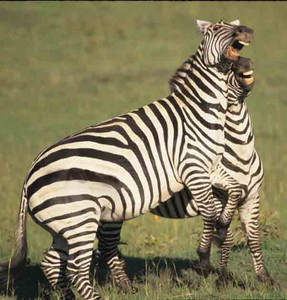
Burchell's Zebra
The first 3 images are of a play-fight between a sub-adult Burchell's Zebra and a younger one. It looked like very rough form of play to me---those teeth are sharp, and wielded by strong jaws. After about 5 mins. the one who is having his ear bitten (3rd image) decided he had had enough, and broke off the contest..[Masai Mara, Kenya]
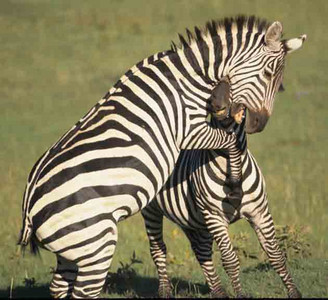
Burchell's Zebra
An older and bigger Burchell's Zebra has selected a younger, smaller one with whom to play. But the playng looks pretty rough. In the previous (and next image) because the younger one appears to be taking most of the beating. [Masai Mara, Kenya].
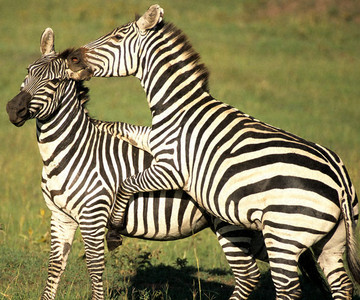
Burchell's Zebra
With Burchell's Zebra, ear-biting must be part of the game. It looked pretty painful, and the younger animal must have agreed, because he broke off the game and ran back and rejoined the rest of the herd. [Masai Mara, Kenya].
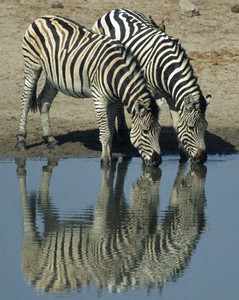
Burchell's Zebra
Two mares drinking--with reflection. These next images well- demonstrate the wide variety in the pattern---no two zebra will have the same markings. [Mussima Dam, Hwange NP, Zimbabwe].
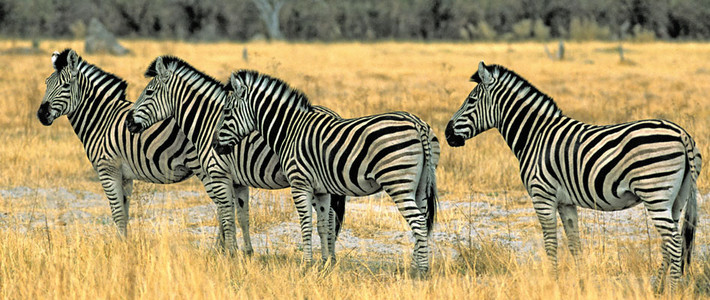
Burchell's Zebra
The Burchell's Zebra in southern africa frequently have 'ghost' stripes, but they are the same species. [Sabi Sabi, South Africa].
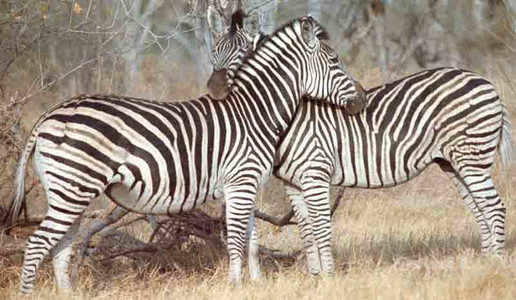
Burchell's Zebra
Two grazing Burtchell's Zebra will frequently take this stance --necks together, each facing in the opposite direction-- for security reasons. [Moremi NP, Botswana].
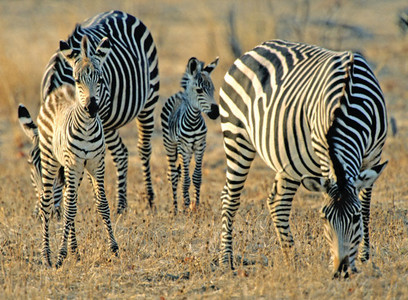
Burchell's Zebra
Burchell's Zebra mares with their 2 foals of about the same age--about 4 weeks old. [Moremi NP, Botswana].

Burchell's Zebra
This is a typical scene of Burchell's Zebras. There was a small pond in front of the kopje behind them, where they came to have a drink. Zebra, unlike Wildebeests, enjoy eating the coarse grass. (A kopje is an upthrusting of rock, tens of thousands of years old. It can be smaller than this, or bigger than a city block). [Serengeti, Tanzania].
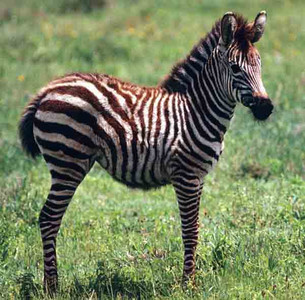
Burchell's Zebra
This 5-month-old Burchell's Zebra's stripes are actually reddish--a rare occurrence that will change to black, when it gets older.[Serengeti, Tanzania].
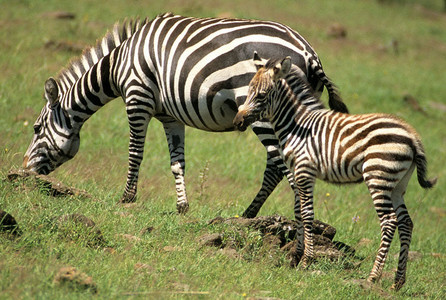
Burchell's Zebra
The Burchell's Zebra calf is probably about one month old. Some of the stripes on its side and forehead are reddish, but not as pronounced as in the previous example. [Masai Mara, Kenya].
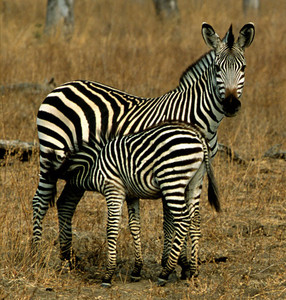
Burchell's Zebra
In the next four images of nursing juvenile Burchell's Zebras, When the foals stand close to their mother's side, they make an interesting pattern. [Moremi NP, Botswana].
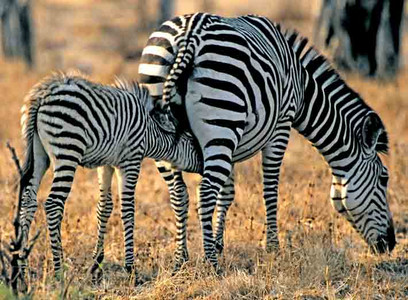
Burchell's Zebra
This 2-month old Burchell's Zebra must believe in 'dealing its cards from the bottom' when it nurses. Oops,sorry! [Khwai, Moremi NP, Botswana].
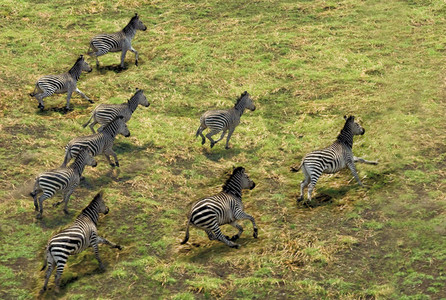
Burchell's Zebra
This small herd of Burchell's Zebra were frightened by our helicopter. [Bushanga Plains, Zambia].
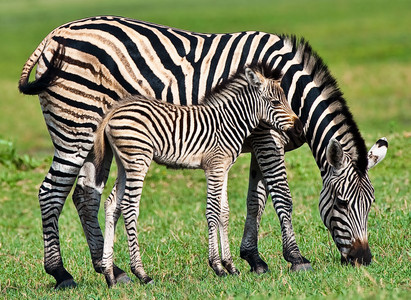
Zebra Colt
...The same 4-wk Zebra colt/mother pair: Please note the beautiful pattern of the two patterns placed against each other. [Botswana]....
